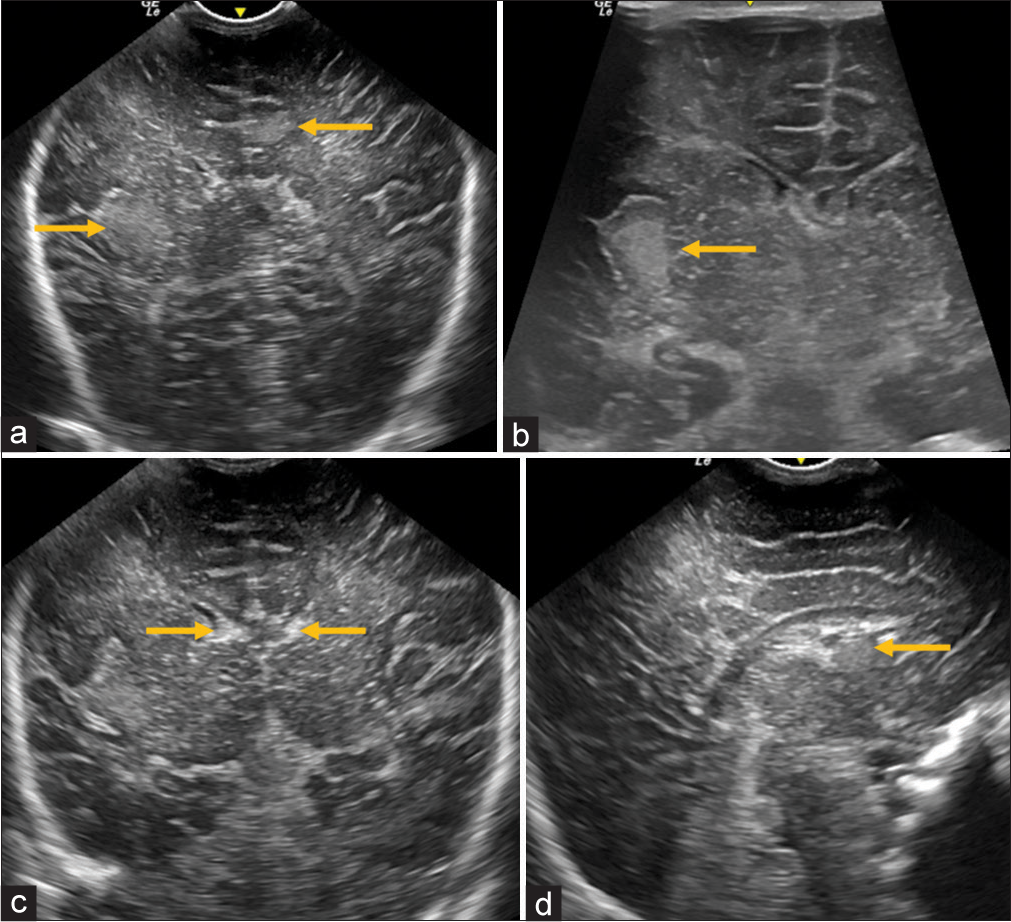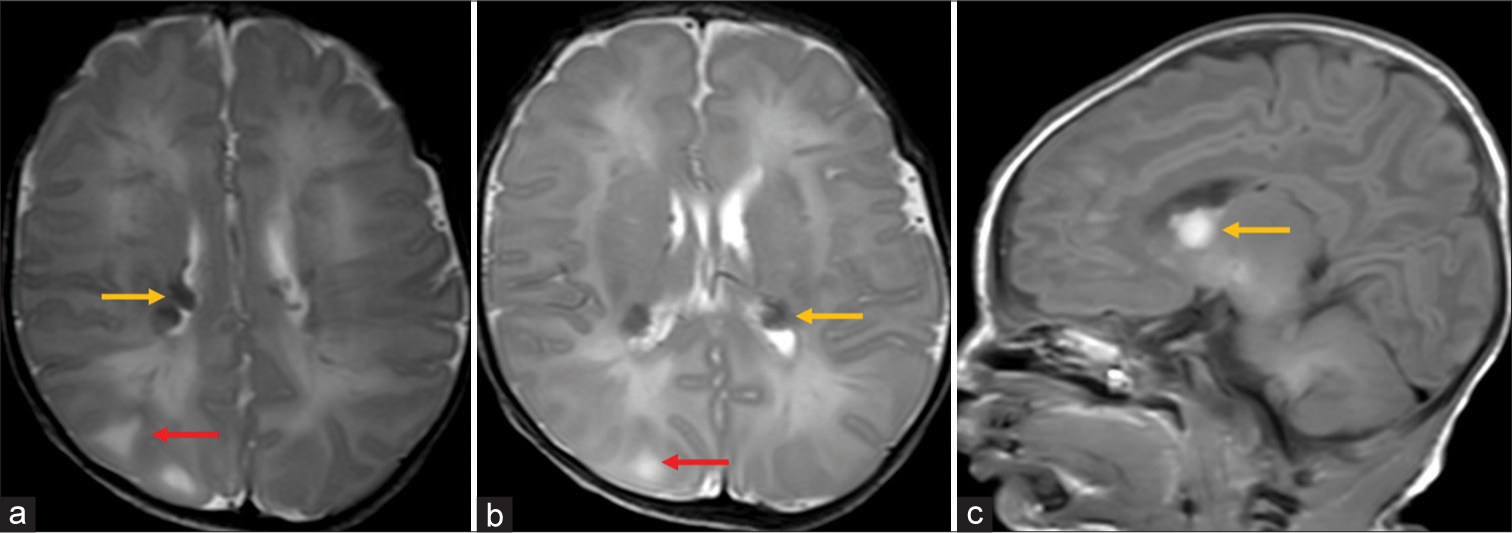Translate this page into:
Neurosonography in cortical tubers in a case of tuberous sclerosis
*Corresponding author: Nishigandha Salunke, Departments of Radiodiagnosis, Bai Jerbai Wadia Hospital for Children, Mumbai, Maharashtra, India. nishigandhasalunke9@gmail.com
-
Received: ,
Accepted: ,
How to cite this article: Salunke N, Aggarwal N, Gala F. Neurosonography in cortical tubers in a case of tuberous sclerosis. Wadia J Women Child Health. 2024;3:110-1. doi: 10.25259/WJWCH_23_2024
One-day-old neonate with antenatally detected cardiac masses was referred for ultrasound to look for any congenital anomaly. Ultrasound brain showed multiple cortical-subcortical tubers in the left frontal and right parietoemporal region [Figure 1a and b], subependymal nodules in frontal horns of both lateral ventricles [Figure 1c], and subependymal giant cell astrocytoma at foramen of Monroe [Figure 1d]. Further, evaluation with magnetic resonance imaging (MRI) brain confirmed these findings [Figure 2]. These features were suggestive of tuberous sclerosis. Detection of cortical-subcortical tubers on neurosonogram[1] as in our case can help in early diagnosis. In infant with other clinical features of tuberous sclerosis, ultrasound can be used as diagnostic modality[2] and thus helping in earlier referral for genetics. It can eliminate the need and wait for MRI in proper clinical setting.

- Neurosonogram (a and b) coronal sections show well-defined cortical-subcortical echogenic lesions suggestive of tubers (yellow arrows), (c) coronal section shows tiny echogenic lesion in the frontal horn of both lateral ventricle suggestive of subependymal nodules (yellow arrows), and (d) sagittal section shows well-defined echogenic lesion at foramen of Monroe suggestive of subependymal giant cell astrocytoma (subependymal giant cell astrocytoma (SEGA)-yellow arrow).

- (a) Axial T2-weighed image shows cortical-subcortical tubers (red arrow) and hypointense subependymal nodules (yellow arrow), (b) axial T2-weighted image shows well-defined hypointense subependymal nodules (yellow arrow) and cortical tuber (red arrow), and (c) sagittal T1-weighted image show hyperintense subependymal giant cell astrocytoma (Subependymal giant cell astrocytoma (SEGA) yellow arrow).
Ethical approval
Institutional Review Board approval is not required.
Declaration of patient consent
The authors certify that they have obtained all appropriate patient consent.
Conflicts of interest
There are no conflicts of interest.
Use of artificial intelligence (AI)-assisted technology for manuscript preparation
The authors confirm that there was no use of artificial intelligence (AI)-assisted technology for assisting in the writing or editing of the manuscript and no images were manipulated using AI.
Financial support and sponsorship
Nil.
References
- Early appearance of tuberous sclerosis complex on cerebral ultrasound in extremely preterm infant. J Neonatal Perinatal Med. 2017;10:203-6.
- [CrossRef] [PubMed] [Google Scholar]






